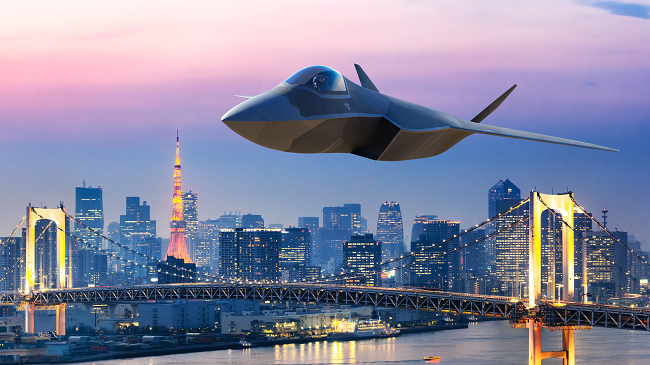
The Global Combat Air Programme (GCAP) aims to have an operational aircraft by 2035, with an initial investment of €8.7 billion already allocated.
GCAP is based on an innovative collaboration model that involves work-sharing among the three nations. Activities are equitably distributed, with each country designing and developing specific components while maintaining an overall system vision.
This approach differs from previous international programs, aiming for greater integration and sharing of expertise. In contrast, the FCAS program involving Germany, France, and Spain, has opted for more traditional work-sharing arrangement. The program is led by Dassault Aviation and Airbus, with other companies like MBDA and Thales handling specific aspects of the project.
Sweden's Future Fighter Programme, led by Saab, is currently pursuing an independent path. While Sweden was initially involved in early discussions with the UK, it has chosen to reassess its options given recent geopolitical changes and its NATO membership.
The GCAP programme envisions the creation of three main sites, one in each nation, where engineers from all three countries will work side by side. For example, in Italy, the Caselle Torinese facility will play a central role, benefiting from its proximity to the airport and existing production and engineering capabilities.
The program extends beyond the main aircraft, including the development of complementary systems such as drones and advanced weapon systems. This "system of systems" approach aims to create an integrated and cutting-edge technological ecosystem. Regarding potential expansion of the consortium, there are currently no other official partners, but Saudi Arabia has requested to join.
According to insights gathered by FW MAG, any new entries will be evaluated based on their ability to avoid disrupting the program's planning and to demonstrate concrete industrial capabilities. Furthermore, the development of complementary systems like drones and advanced weapons is seen as fundamental to the sixth-generation concept, with potential for independent collaborations outside the main program.
Stealth technology remains a sensitive topic, with some differences in knowledge sharing between partners. The program aims to improve upon existing fifth-generation technologies and potentially surpass current capabilities in many aspects, like how the TORNADO program did in its time – it is a programme that is rooted in hearts and minds of British and Italian industrialists and considered as a success story.
Albeit not publicly discussed, a timeline and roadmap would exist to reach the 2035 objective, with plans for test beds and demonstrators. The program's ambitious schedule is supported by advancements in digital technologies and computational capabilities, which are expected to significantly reduce development time compared to previous fighter programs.
Concerning assembly lines for the GCAP, there are several important points to consider. Currently, each participating nation (Italy, UK, and Japan) aims to have its own final assembly line. This approach is seen as crucial for maintaining control over the program and establishing a strong foundation for integrated logistical support. The Italian perspective, for instance, emphasizes the importance of having a domestic assembly line.
Given Italy's existing facilities for Eurofighter production in Caselle and the F-35 assembly line in Cameri, it would be unlikely for Italy not to have its own GCAP assembly line. The Caselle facility is considered a prime candidate for the GCAP assembly line due to its proximity to an airport, existing production capabilities, and engineering expertise. The idea of having only two assembly lines, one in the West and one in the East, is not considered viable or desirable.
This is partly due to the significant investments and resource absorption required for such facilities, as each partner wants to maintain core capabilities (and return on investment) on its own territory. Hence, each participating nation is expected to have its own assembly line to maintain sovereignty and industrial capabilities.
It is worth noting that the final assembly line is not just about production, but also plays a crucial role in long-term maintenance and support. For example, the F-35 facility in Cameri now conducts more maintenance work on other nations' F-35s than it does on new aircraft integration and delivery.
As the the programme progresses, there may be opportunities for collaboration and optimization of assembly processes across the three nations. However, the current focus is on establishing the foundation for each nation to have its own final assembly capabilities while maintaining the collaborative spirit of the GCAP concept.
Regarding Saudi Arabia potentially joining the Global Combat Air Programme (GCAP), there have been developments. In November 2024, Italian Foreign Minister Antonio Tajani indicated that Saudi Arabia is likely to join the GCAP. This potential expansion could transform GCAP into a truly global initiative, bringing substantial financial resources and access to a lucrative market for advanced fighter jets. Saudi Arabia's interest in joining GCAP appears to be strong.
Ahmad Al-Ohali, the governor of Saudi Arabia's General Authority for Military Industries (GAMI), stated that the Kingdom is "very keen" on joining the program. However, he emphasized that localization remains a priority for any deal to be sealed, indicating that Saudi Arabia seeks to ensure domestic industrial benefits from participation.
However, Saudi Arabia's inclusion is not without challenges. There are concerns about managing divergent interests among partners and potential political complications due to Western criticism of Saudi Arabia's regional activities. Additionally, Japan has reportedly opposed adding Saudi Arabia to the program, and any new member would require agreement from all three current partners - London, Tokyo, and Rome.
Therefore, the potential inclusion of Saudi Arabia in GCAP could have significant implications for the program's future, including expanded financial resources, market access, and strategic partnerships. However, it also presents challenges in terms of aligning interests, managing political sensitivities, and maintaining the program's current momentum and timeline.
A possible way out is the creation of Tier 2 partnerships, as the process for adding new partners to GCAP appears to be carefully managed. Herman Claesen, BAE's managing director for Future Combat Air Systems, has indicated that there is significant interest from other nations in joining the programme. Should this happen, a community of Tier 2 partners would see the light, mirroring the model adopted by Lockheed Martin for its F-35.
For example, in the F-35 program, Tier 2 partners like Italy and the Netherlands made substantial financial contributions and gained significant industrial cooperation and technology transfer benefits, though less than the Tier 1 partners.
For GCAP, potential Tier 2 partners would likely need to demonstrate concrete industrial capabilities and ensure that their participation does not disrupt the existing programme timeline or industrial balance. The programme aims to have an operational aircraft by 2035, so any new partners would need to integrate smoothly into the existing development and production plans.
The core partners will likely evaluate potential Tier 2 candidates based on their ability to contribute meaningfully to the programme without compromising its ambitious timeline or the sovereignty interests of the founding nations. This careful approach reflects the desire to maintain a balance between expanding international cooperation and preserving the core capabilities and decision-making authority of the original partners.








.png)
